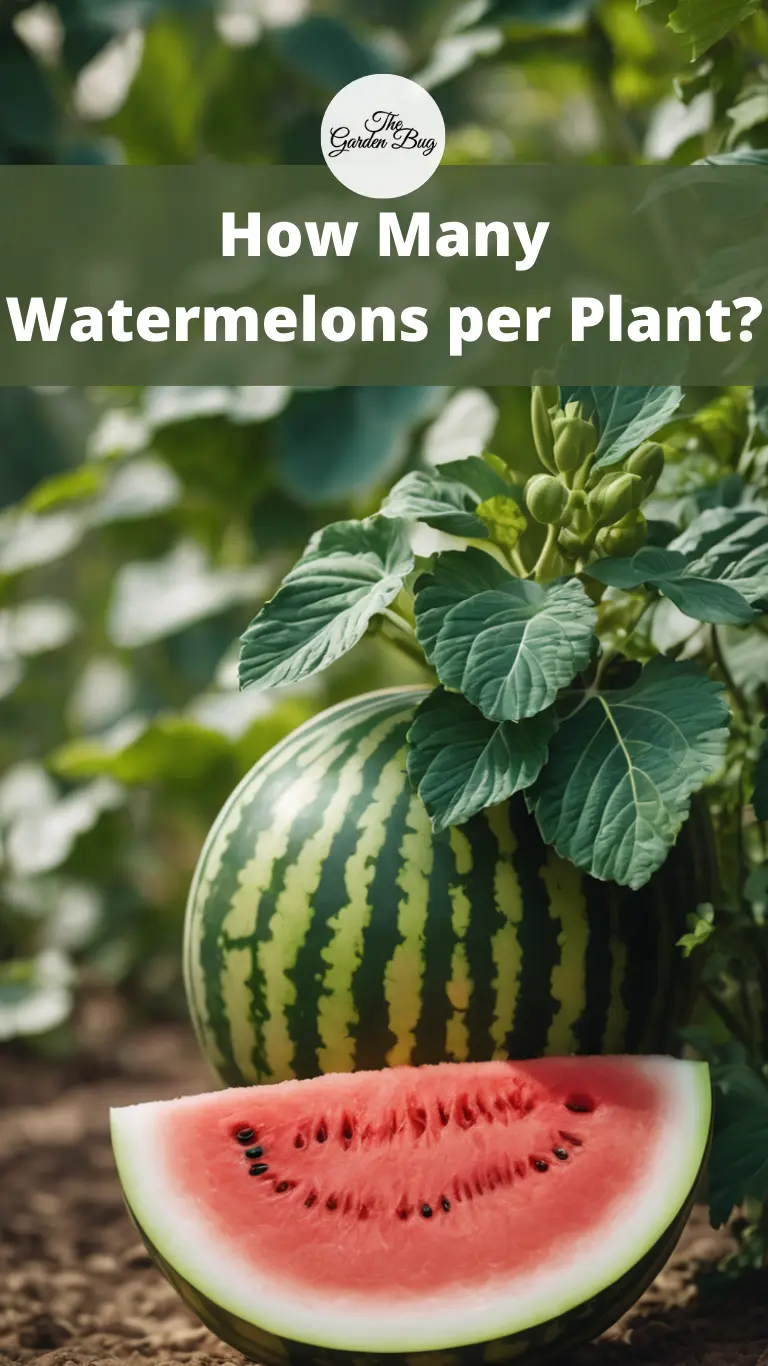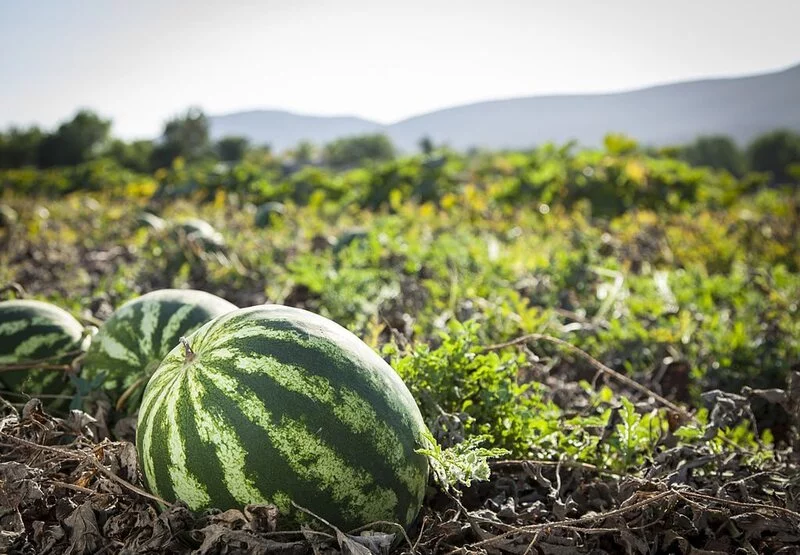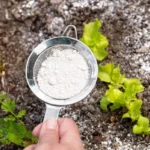Whether you’re a seasoned gardener or a beginner just getting your hands dirty, the joy of harvesting your own juicy watermelons is unmatched. But have you ever wondered how many watermelons one plant can produce? If so, you’re in the right place. In this article, we will explore the growth of watermelon plants and discuss how many fruits you can expect from each plant.
- Beautiful – Large full color packet of Crimson Sweet Watermelon (Citrullus lanatus) seeds. This classic watermelon is high in lycopene and bursting with flavor. Fruits are 20-25 pounds with light striped skin, vivid crimson flesh and small black seeds. Resistant to anthracnose and fusarium wilt. AAS winner. Minimum of 2 g per packet (about 50 seeds).
- Productive – Watermelon germinates in 5-9 days when soil temps are 70-85°F. Plant 1/2” deep and space 6’ apart in an area with full sun. This variety will grow up to 6’ tall on a trellis, or spread up to 6’. Watermelons will mature in 80-90 days, plant in USDA zones 3-9.
- Good Eats – Make a BIG change to your garden with Crimson Sweet Watermelon! It is rich with potassium, Vitamin A, and Vitamin C. Enjoy a high yield harvest from this hefty watermelon.
- Easy to Grow – Instructions included on each packet. Plus, we are available to answer all your questions. If these seeds don’t germinate, we will happily make it right for you.
- Safe and Sustainable – Our operation is fully solar powered, and Sow Right Seeds has taken the Safe Seed Pledge to sell only fresh Non-GMO heirloom seeds for you and your family.
Understanding Watermelon Growth
Watermelons, like other cucurbits such as cucumbers and squashes, grow on sprawling vines that cover a lot of ground. They’re annual plants, which means they complete their life cycle in a single growing season. Starting from seeds, they sprout, flower, produce fruits, and then die off, all within a few months.
The journey from a tiny seed to a full-sized watermelon is a fascinating one. The seeds germinate within a week or two, sprouting into seedlings with round, baby leaves. As the plant matures, it develops long, trailing vines. These vines carry large, lobed leaves, and it’s among these leaves that you’ll find the first signs of fruit: yellow flowers.
These flowers are the key to fruit production. Watermelon plants have both male and female flowers, and pollination is necessary for fruit to form. Once a female flower is pollinated (usually by bees), it will start to grow a watermelon.
Factors That Affect the Number of Watermelons Per Plant
The number of watermelons each plant produces depends on several factors:
- Variety: Different varieties of watermelons produce different amounts of fruit. For instance, smaller “bush” types may produce 2 to 4 small fruits per plant, while larger “vining” types usually produce 1 to 2 large fruits.
- Pollination: As watermelons need bees for pollination, a lack of bees or other pollinators in your garden can decrease the number of fruits your plants produce.
- Growing Conditions: Healthy, well-cared-for plants are more likely to produce more fruit. This includes factors like adequate sunlight, proper watering, good soil quality, and the right temperature.
Ways to Increase the Yield of Your Watermelon Plants
If you’re keen to get the most out of your watermelon plants, here are a few tips:
- Improve Pollination: Encourage bees and other pollinators to visit your garden. Planting wildflowers and other flowering plants can help. If necessary, you can also hand-pollinate your plants.
- Provide Ideal Growing Conditions: Ensure your plants receive full sun and plenty of space to spread out their vines. Water regularly, especially during dry periods.
- Fertilize Appropriately: Use a balanced fertilizer to provide your plants with necessary nutrients. You can also amend your soil with compost or well-rotted manure to improve fertility.
- Practice Pruning: Once your plant has set a few fruits, you can prune the vine to allow the plant to put more energy into growing those fruits. Be careful not to over-prune, as the leaves are necessary for photosynthesis.
- Package contains 4 pounds organic vegetable and tomato fertilizer grains and is produced to avoid wasteful runoff, mess, hazards and smells
- Plant fertilizer is formulated with a 2-5-3 NPK to provide vegetables and tomatoes the nutrients they need to create high yield and vibrant foliage
- Jobe’s organic fertilizer contains no synthetic chemicals and are OMRI listed for organic gardening by the USDA
- Application is simple and should be done every 4-6 weeks or as needed during the growing season
- Jobe’s organic fertilizer is easily measured to provide the right amount of nutrients for vegetable and tomato plants without risk of over fertilizing
Remember, patience and care are crucial when it comes to growing watermelons. With the right approach, you can maximize your yield and enjoy an abundance of this juicy, refreshing fruit.
Frequently Asked Questions About Watermelon Growth
- Can I grow more than one watermelon per vine? Yes, each vine can produce more than one fruit. However, for larger varieties, it’s often recommended to prune the vine to allow only one or two fruits to develop for the best size and flavor.
- What’s the best time to plant watermelons? Watermelons love heat, so it’s best to plant them when all danger of frost has passed and the soil has warmed up. In most areas, this is in late spring or early summer.
- Why are my watermelon flowers falling off without producing fruit? It’s normal for male flowers to fall off after they’ve released their pollen. However, if female flowers are falling off, it may be due to poor pollination or stressful growing conditions.
Conclusion
Now that you understand how watermelon growth works and how many watermelons one plant can produce, you’re well equipped to start or enhance your watermelon growing journey. Keep in mind the crucial role of factors like the variety, pollination, and growing conditions. With patience and proper care, you can maximize your watermelon yield and relish the delightful experience of harvesting your own fruit. Remember, the taste of a home-grown watermelon is worth every bit of effort!







